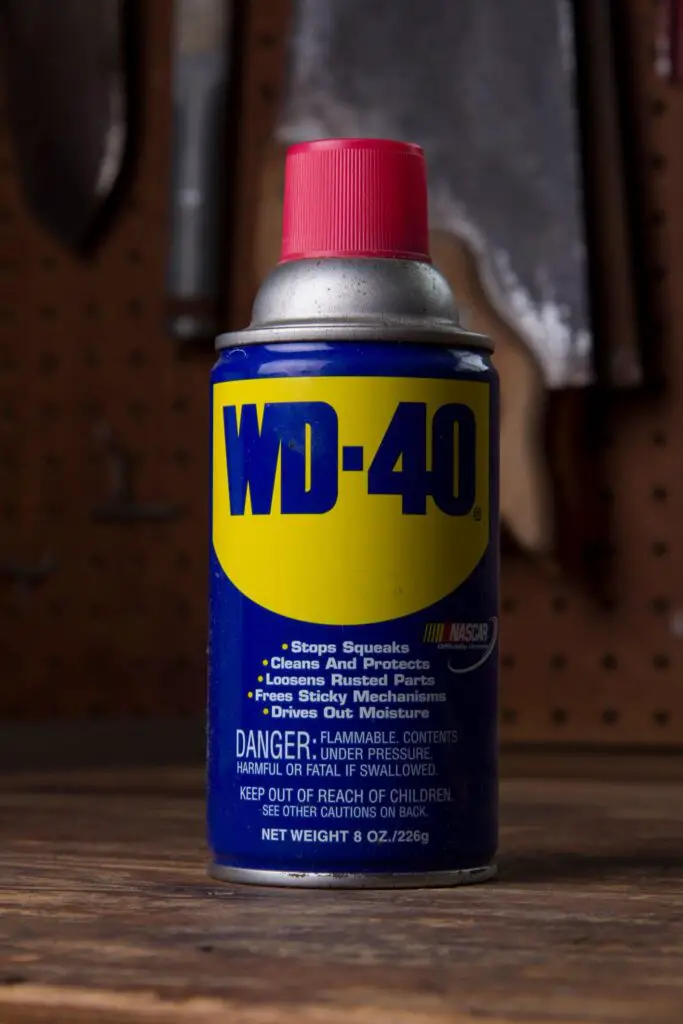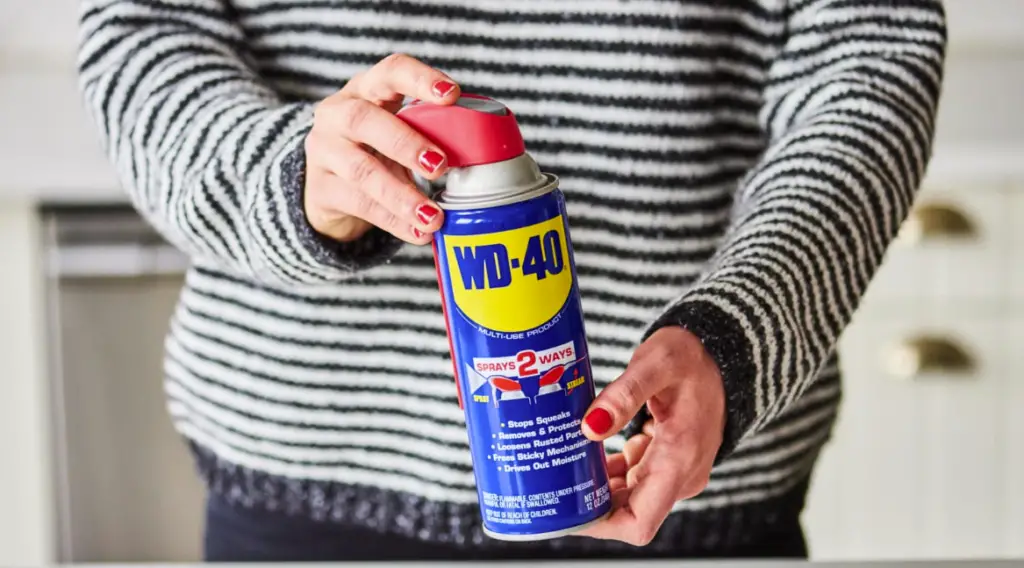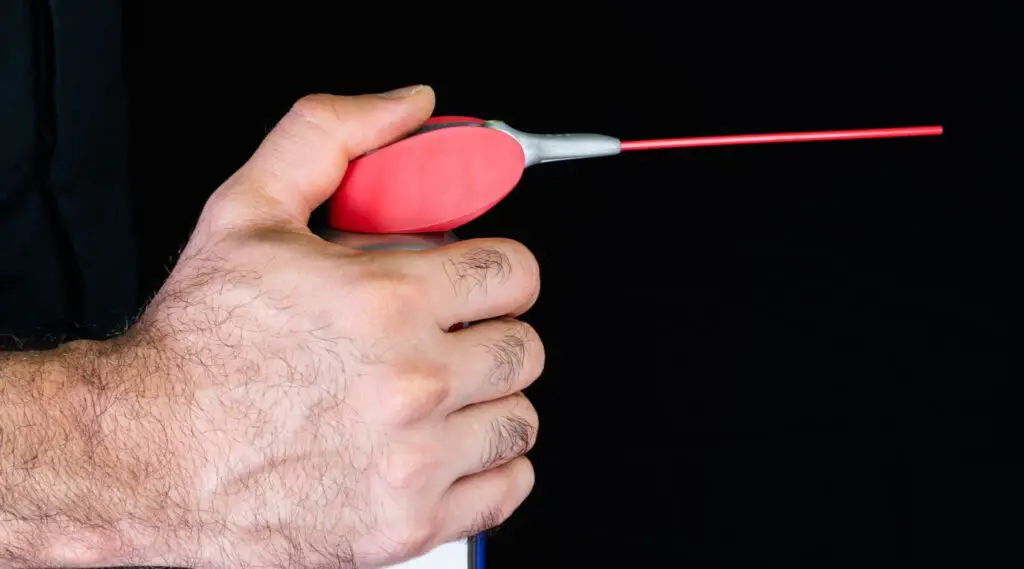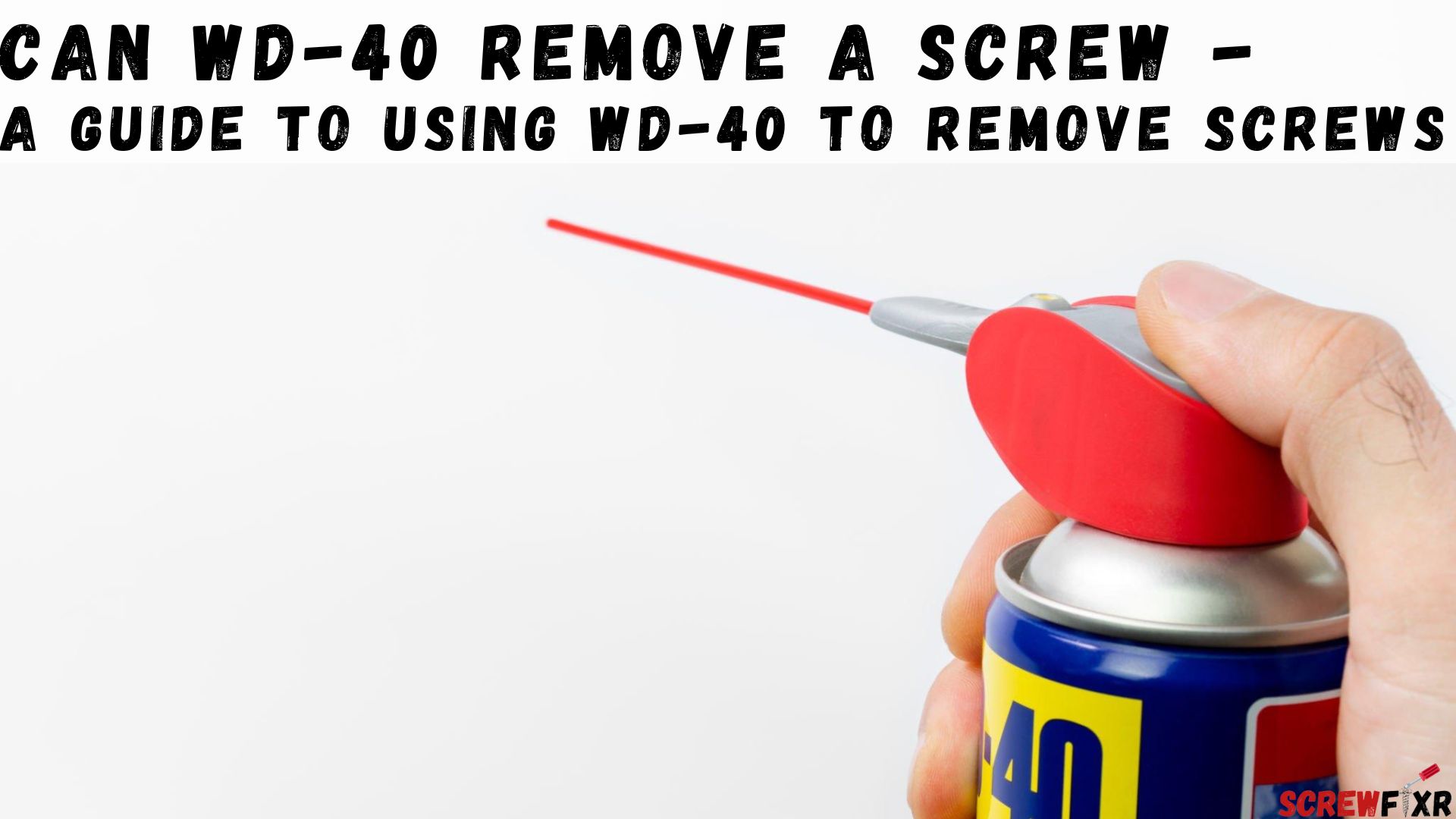Are you finding yourself in a situation where a screw just won’t budge? Removing a screw might not always be as easy as it seems! When screws have been in their fixed places for a long time or are covered in rust, it can be a difficult task to remove them. Besides the conventional methods, have you ever thought to yourself, “Can WD-40 remove a screw”?
The answer is yes, the chemical solvent that has been used for decades to loosen the rusted, stubborn screw. Here, we’ll discuss exactly how to use WD-40 to get that screw out of its hole.
Removing A Screw With WD-40:Step-By-Step Guide

This step-by-step guide will show you the process of safely, easily, and effectively removing a screw from any surface with WD-40. With just a few simple steps, you’ll be able to successfully remove even the most stubborn screws in no time. All you have to do:
Step 1 – Check the head of the screw for any damage or corrosion. If the head is damaged or corroded, you may need to use a different tool to remove the screw.
Step 2 – Spray a bit of WD-40 over the corroded area and wait 15 minutes while the lubricant soaks in and allows the lubricant to penetrate the threads.
Step 3 – Use a flat-head screwdriver or a Phillips head screwdriver to try and unscrew the screw. If the screw turns, then you can continue to unscrew it until it is out.
Step 4 – If the screw won’t turn, consider using a bit extension and a drill. Put the extension on the drill bit, and then attach it to the screw. Make sure not to use too much pressure. You may want to start with a low-speed setting and gradually increase the speed until the screw comes out.
Step 5 – If the screw still won’t come out, use a pair of vice grips to grip the head of the screw. Make sure to tighten the grips until you have a good grip on the head of the screw, and then try to unscrew it.
What Are The Benefits Of Using WD-40 To Remove A Screw?

There are a few benefits of using WD-40 to remove a screw including –
- It helps to protect the surface of the screw from corrosion, which can weaken the hold of the screw.
- It reduces friction between the screw and the surface it is attached to, making it easier to unscrew.
- Protect against further rusting and corrosion even after the screw has been removed.
- It helps to prevent further damage to the surface around the screw, such as stripping or scratching.
- WD-40 is non-toxic, making it a safe and efficient way to remove a screw.
Are There Other Methods For Removing A Stuck Screw?
Yes, besides WD-40, there are other methods that can be used to effectively remove a stuck screw. In the following, we will explore some of these alternative methods and discuss their effectiveness.
Elastic band: Using an elastic band to remove screws is not always a recommended solution, but it is possible! With just a drill and a wide elastic band, you can easily grip the screw and pull it out. Simply put the band over the screw, press it down with your drill, then squeeze the trigger—it’s as easy as that! It’s a great way to save yourself time and effort when attempting to remove screws in awkward positions.
Use an impact screwdriver: The next option is to use an impact driver. Simply place the tip of the impact screwdriver on the head of the stuck screw. as you apply pressure to the screwdriver handle and press down at a steady rate. With the pressure, the impact screwdriver will start to rotate and loosen the screw. When the screw is loose enough, you can remove it by turning it with your hand or a regular screwdriver.
You can also hit it on the top with a good-quality hammer that has loosened the screw. Use the center punch, which is spring-loaded. You need to get on the edge of the screw, Simply pull back the spring, release it, and the momentum of the spring will drive the hammer forward which will then undo the screw. Repeat the process a few times, and you’ll have that screw loosened in no time. Give it a try – you won’t regret it!
Try a Heat gun – Place the heat gun near the screw and heat it up for a few seconds. Use a screwdriver to carefully back the screw out of its hole. Continue to use the heat gun to keep the screw warm and loosen it as you go. Once the screw is loose, you can remove it with your fingers or a pair of pliers.
FAQ Can WD-40 Remove A Screw

Is WD-40 safe to use on screws?
Yes, WD-40 is safe to use on screws. However, it is important to note that WD-40 should never be used to lubricate moving parts or electrical contacts. It is also not recommended for use on locks, threads, or any surface where long-term lubrication is necessary.
Is WD-40 safe to use on all surfaces?
Yes, WD-40 is safe to use on all surfaces. However, it is best to test it in a plain area first, to ensure it won’t cause any damage.
Will WD-40 damage the screw once it has been removed?
No, WD-40 will not damage the screw once it has been removed.
Tips or tricks for getting the best results from using WD-40 on a screw?
- To remove excess WD-40, use a clean cloth to wipe away any excess.
- Shake the can of WD-40 before each use to ensure the contents are properly mixed together.
- Make sure the affected screw is completely dry before applying it.
- Allow the WD-40 to penetrate and lubricate the screw for a few minutes before attempting to unscrew it.
- For added grip, wrap a cloth around the head of the screw and try to loosen it again.
Final Words
If you’ve been struggling with removing stubborn screws, WD-40 can be a lifesaver. It’s a unique lubricant that can help make turning the screw a breeze without damaging any surrounding materials. Sometimes, screws can be too damaged or corroded, which may require the use of a screwdriver, pliers, or even a power drill. So, don’t forget to call in the professionals when necessary. But overall, WD-40 is a great tool to have in your kit, so give it a try the next time you’re faced with a challenging screw.


